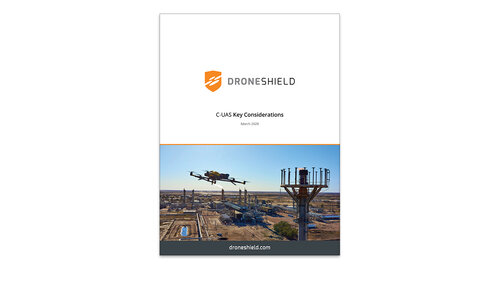Russia’s invasion of Ukraine presents a massive opportunity for unmanned aerial systems (UAS) to take the front line in modern warfare. Despite the early skepticism, drones bring air superiority over Russia by strengthening Ukraine’s air defence systems and providing electronic warfare countermeasures. The latter is particularly crucial in the sense of embracing new technology provided by NATO. This includes understanding the importance of counterdrone protection and the relationship between operators and unmanned systems.
Russia’s failure to follow the development of drone defence and understand how drone warfare works are proven fatal. One of Russia’s biggest losses is the sinking of its flagship to Ukraine’s artillery strikes, an attack that Russia failed to anticipate due to its inferior counterdrone protection systems. Russie also failed to equip its vehicles with counterdrone protection or electronic warfare protection, allowing Ukrainian drones to fly in close proximity and carry out airstrikes.

On the contrary, Ukraine dominates drone warfare by successfully carrying out intelligence and reconnaissance with UAS and C-UAS. The NATO-supplied electromagnetic warfare systems had taken down dozens of Russian drones and countered Russian jammers, forcing Russia to shoot down Ukraine drones with surface-to-air missiles that cost way more than their target.
UAS and C-UAS had also been a major propaganda win for Ukraine as said technologies provide images and video of Ukrainian strikes. Drones had helped capture the invasion on the battlefields for the world to see, debunking misinformation and propaganda efforts perpetuated by the opposing party.
Ukraine’s success in drone warfare cements the claim that drones offer significant military capability at a relatively low cost – and that C-UAS plays a significant role in ensuring that. Every conflict might be unique, with different parties having different military capabilities. However, if there is one thing that is certain, it is that drone and counterdrone technology will only evolve faster to adapt to future warfare.

How DroneShield Pioneers C-UAS Technology
DroneShield is publicly listed on the Australian Securities Exchange (ASX) under ticker DRO. Our company focuses on radio frequency sensing, AI and machine learning, sensor fusion, electronic warfare, rapid prototyping, and MIL-SPEC manufacturing. We help enhance security systems for end-users in the military, government, law enforcement, and critical infrastructure sectors worldwide.
Our world-leading C-UAS technologies incorporate next-generation Electronic Warfare (EW) and Signals Intelligence (SIGINT) work as well as the power of AI to provide better accuracy in various terrains and missions. Contact us to discuss available options at [email protected].




Comments